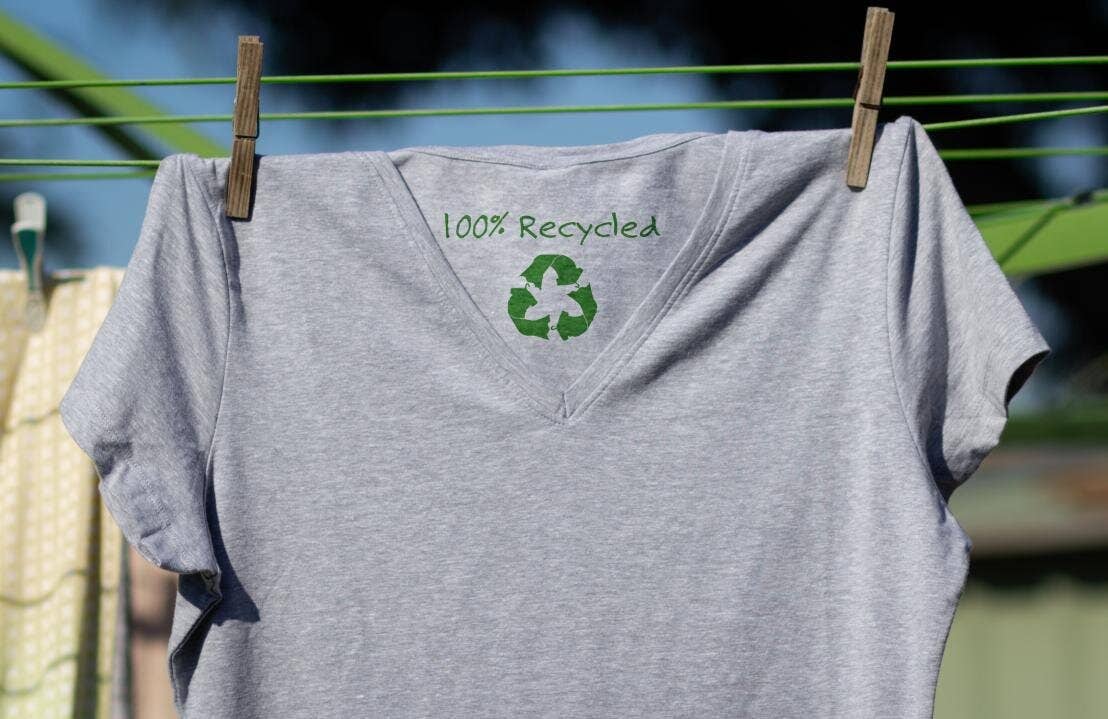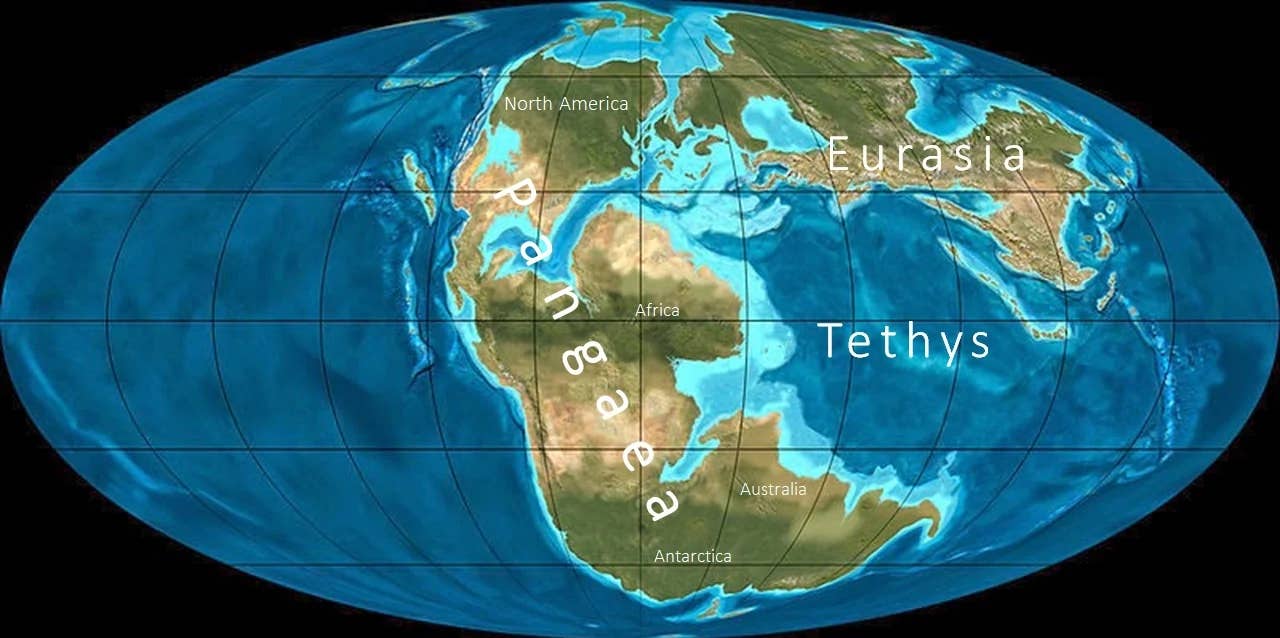Latest trend keeps clothes out of landfill
The future of fashion is moving into a new dimension where new textile technology upcycles old clothes into brand new fabrics.

[Oct 25, 2021: Elena Pappas, Horizon: The EU Research & Innovation Magazine]
Textile waste is so last season. The future of fashion is moving into a new dimension where new textile technology upcycles old clothes into brand new fabrics.
Europe's landfills are bursting at the seams with discarded clothing and other textiles. Of the 5.8 million tons of textiles that EU consumers discard every year, only a quarter is recycled. According to Friends of the Earth Europe, the remaining 4.3 million tons are dumped.
That's equivalent to 60 garbage truckloads of clothes being burned or buried in landfill every minute. This is a pretty bleak picture, but change is under way.
Circularity and innovative solutions are already making the fashion industry more sustainable. This means producing clothes in an environmentally friendly manner, making them reusable and recyclable wherever possible.
Increasingly, designers and fashion houses are taking the lead on sustainable fashion. They design to eliminate waste from the production cycle, meaning they design for circularity.
Take the New Cotton project, for instance, where textile industry players are demonstrating a circular blueprint for commercial fashion production. They are taking post-consumer textile waste and sorting and processing it, to regenerate it back into a brand-new textile 'superfibre' that goes by the name Infinna using Infinited Fiber Company's cellulose carbamate technology. In the process, textile waste goes through a number of physical and chemical transformations as it is cleaned and broken down at the molecular level to be reborn as Infinna, a new kind of manmade cellulosic fiber.
Related Stories
Just like cotton, but created from textile waste
This regenerated fiber is spun into yarn, made into fabric and designed to make clothes available for retail. "[Infinna] looks and feels soft and natural, like cotton; it is biodegradable and contains no microplastics," explained Laura Vinha, communications director at Infinited Fiber Company and project coordinator of New Cotton. This bio-based fiber is currently created completely out of textile waste, and the garments made with it can be recycled alongside other textile waste in the same process, making it a truly circular textile fiber.
What is key here is that nothing new needs to be grown or harvested to create Infinna. So, this fiber reduces the heavy burden currently taxing limited virgin resources (like land and water and oil) from production of conventional textile fibers (like cotton, viscose or polyester).
As the New Cotton project's partners work together to develop a circular fashion blueprint, they are mapping out the availability of textile waste streams and conducting a life cycle assessment for the products created in the project.
"Adidas and H&M Group are producing garments for retail using Infinna, and people will be able to experience that circular or regenerated clothing doesn't have to mean compromising on design or comfort," said Vinha. Hopefully, this will help change the image of circular clothing as something niche or alternative and demonstrate that circularity really can become mainstream in the fashion industry.
A growing number of retailers are developing similar take-back systems. Some retail stores are encouraging customers to drop off used clothing or textiles to receive discounts on new purchases. One retailer even developed the world's first in-store garment-to-garment recycling system, known as Looop. This machine shreds old clothes and turns them into new blankets or clothes, without using any water or chemicals.
Cellulose helps grow an eco-friendlier fashion industry
Fashion is creative by nature and so are its sustainable solutions. There are now everyday wardrobe essentials made entirely from biodegradable materials. Recently, the WEAR project supported teams of artists and technologists to develop fully functional prototypes of wearables and smart textiles.
"With support from WEAR, we demonstrated that it's possible to create a fashion collection that is circular, so that we can dissolve it at the end of life and recover it into new cellulose fibers that are perpetual and 100% biodegradable," said Brooke Roberts-Islam, co-director at and one of the teams supported by WEAR. "This means that the clothing created won't be worn and then at some point thrown away," explained Heritiana Ranaivoson, senior researcher at imec-Studies in Media, Innovation and Technology (SMIT)-Vrije Universiteit Brussel and WEAR project coordinator. "Instead, at the end of the garment's life, the materials used to make it can be dissolved and turned into new materials." These materials are then transformed into garment packaging, tags and shop interiors and are used in a range of other applications.
Recycling of post-consumer textiles
The collection rates of textile waste in the EU are roughly 25%, with differences across Member States. A revision of the EU Waste Framework Directive (Directive 2008/98/EC) will oblige Member States to collect these discarded textiles separately by January 2025, but handling the immense volumes of used clothing poses a challenge.
Presently, less than 1% of textile waste is recycled into new fibers for clothing and the non-reusable fraction is mostly downcycled into industrial rags, upholstery filling and insulation, or is incinerated or landfilled.
"An increasing number of high-profile fashion brands are setting ambitious targets for the use of recycled fibers from post-consumer textile streams in their garments," said Evelien Dils, project manager of Circular Economy at VITO and SCIRT project coordinator. Under the Global Fashion Agenda initiative, for which textile recycling is one of the four action points, approximately 90 brands have committed to taking action on textiles circularity. Given the European Commission's Circular Economy Action Plan strategy for textiles, this number is likely to increase.
There are hurdles to overcome. We have limited knowledge of the feasibility of recycling several fibers in mixed fabrics and textiles. The complex combinations or blends of materials in garments pose challenges and impede recycling opportunities, because of the limited technologies currently available.
Clever textiles recycling
"Thanks to industry frontrunners and research, we are seeing technological innovation in textile-to-textile recycling of post-consumer textiles," said Dils. As part of the SCIRT project team, Dils and other researchers are covering the entire value chain for circular textiles (sorting technology expert, recycler, spinner, clothing manufacturers and retailers) and feed back their findings to design requirements for garments.
There is plenty of talent to move the fashion industry into a closed loop technology, and by way of example, inspire the entire industry to embrace circularity in its processes and material choices. Vinha believes this change is possible: "Sure, we will face bottlenecks, but a concerted effort by industry professionals can help propel this transition and turn a traditionally linear system into a circular one."
For more environmental news stories check out our Green Impact section at The Brighter Side of News.
Like these kind of feel good stories? Get the Brighter Side of News' newsletter.
Tags: #Green_Good_News, #Fabrics, #Clothes, #Recycling, #Textiles, #The_Brighter_Side_of_News
Joshua Shavit
Science & Technology Writer | AI and Robotics Reporter
Joshua Shavit is a Los Angeles-based science and technology writer with a passion for exploring the breakthroughs shaping the future. As a contributor to The Brighter Side of News, he focuses on positive and transformative advancements in AI, technology, physics, engineering, robotics and space science. Joshua is currently working towards a Bachelor of Science in Business Administration at the University of California, Berkeley. He combines his academic background with a talent for storytelling, making complex scientific discoveries engaging and accessible. His work highlights the innovators behind the ideas, bringing readers closer to the people driving progress.



